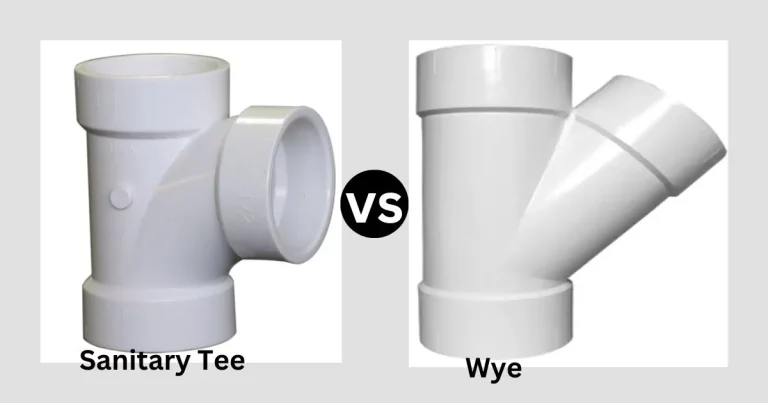What is a Water Heater Flush? Why Do It?
Is your hot water sputtering, losing pressure, or turning faintly rusty? You might be surprised to learn that the culprit could be lurking right inside your trusty water heater – not flames or electricity, but sediment. Over time, this buildup of mineral deposits and rust can wreak havoc on your tank’s efficiency and lifespan. That’s where the crucial process of a water heater flush comes in.
So, what is a water heater flush? A water heater flush is a process of draining water heater tank to get rid of the sediment and other debris that collects inside it over time. Not only does sediment in water heater compromise the heater’s efficiency, leading to increased energy consumption, but it can also potentially cause damage, reducing the lifespan of your appliance.
Understanding the process and its benefits will empower you to ensure your water heater operates at its peak performance, providing reliable hot water when you need it most. So, lets dive in to the main discussion.
What is a Water Heater Flush?

A water heater flush is a process used to remove sediment buildup from within a water heater tank. Sediment accumulation in a water heater is a common occurrence over time and regular flushes can help prevent issues.
Sediment such as minerals, rust particles, and other deposits accumulate naturally in a water heater as it cycles hot water throughout a home over the years. The sediment in water heater is composed of these kinds of contaminants that are typically present in the water supply itself. As time passes and more hot water is used, the sediment layers up inside the bottom and lower parts of the tank.
Left untreated, this built-up sediment can negatively impact the water heater’s performance and functionality. It reduces the tank’s operational capacity as sediment takes up more space. The sediment buildup can also clog components and restrict water flow. In severe cases, cloudy or dirty water may be discharged from the tank instead of clear hot water.
A water heater flush is a maintenance procedure done to clear out accumulated sediment from the tank. It involves emptying a hot water tank by draining it from the bottom sediment release valve. Once fully drained, fresh water is then refilled into the tank which helps displace and rinse away loose sediment trapped inside.
Performing a water heater flush on a regular basis, such as annually, can help prevent excessive sediment deposits from occurring within the tank over the long run. It restores the equipment’s full operational capacity by removing built-up sediment obstructing the tank’s interior. The flushed tank can then provide clearer hot water to homes and businesses once refilled.
Benefits of Water Heater Flush
Flushing your water heater regularly is a great way to improve its efficiency, extend the heating element’s lifespan, and save money on costly repairs. Here are some of the benefits of flushing your water heater regularly:
Improved Efficiency
Regularly flushing your water heater can help maintain its performance and energy efficiency over time. Sediments build up within the tank, which causes it to work harder to heat the same amount of water. By flushing out these sediments, your tank will use less energy to heat the same amount of water, reducing your overall energy bill.
Increased Lifespan
In addition to improving efficiency, regularly flushing your water heater also helps extend its lifespan by keeping it free from sediment buildup and rust. The longer you can keep yours in good condition, the longer it will be able to serve you without needing costly repairs or replacement.
Reduced Maintenance Costs
By eliminating sediment buildup in the tank, regular flushes help reduce wear and tear on your water heater, which could otherwise lead to costly repair bills later on. It’s much easier (and cheaper) to take preventive measures such as flushing than to pay for expensive repairs after significant damage.
How Often Should You Flush Your Water Heater?
Flushing your water heater is important in maintaining it and ensuring it runs efficiently. It is recommended that you flush your water heater at least once a year to remove any sediment or buildup in the tank.
This will help keep your hot water running smoothly and prevent potential problems. Flushing your water heater more often, such as every six months, can also be beneficial if you have hard water or live in an area with high levels of sediment in the water.
When flushing your water heater, it is important to follow the manufacturer’s instructions for safety and the best results. Generally, this involves turning off the power supply to the unit and closing the cold-water valve before draining out any sediment or debris from the tank.
You should also check for any signs of corrosion or damage while flushing, as this could indicate a more serious issue with your hot water system.
There are a few factors to consider when deciding when to flush your water heater, including the age of the unit, how often it is used, and any signs of corrosion or buildup.
Age of Unit
The age of your water heater is one factor to consider when deciding when to flush it. If you have an older model, it may need to be flushed more frequently than newer models. This is because older models tend to accumulate more sediment over time due to their lower efficiency ratings.
Frequency of Use
Another factor to consider when deciding when to flush your water heater is how often it is used. If you use your hot water tank regularly, such as for showers or laundry, you may need to flush it more often than if you use it occasionally. This is because sediment can build up faster in tanks that are used more frequently.
Signs of Sediment in Your Water Heater
Your water heater should not have any sediment buildup on the inside. If you see signs of sediment, such as discolored or murky water, coming out of your faucets, this may indicate that you should flush your water heater sooner rather than later.
Other signs of sediment buildup include:
- A decrease in hot water pressure.
- An increase in the time it takes for hot water to reach your faucets.
- Strange noises come from the tank, such as rumbling or popping sounds.
- A decrease in the temperature of hot water.
- If you look inside your tank, you may see white powdery deposits on the bottom or sides.
UPDATE: Do You Really Need to Flush Your Water Heater?
It depends! Water heater flushing is required only when you use well water or live in an area with extremely hard water. Most municipal water suppliers must treat their water and ensure it is safe for consumption. This treatment process helps to reduce the mineral content in water, preventing sediment buildup and extending the life of your water heater. If you do not use well water or live in an area with extremely hard water, you may never need to flush your water heater. However, inspecting it at least once a year is still a good idea to ensure everything is in working order.
How to Flush a Hot Water Heater
While most people would tell you that it’s best to hire a professional for the job, there are times when you may want to attempt a DIY water heater flush. If this is the case, here is a step-by-step guide for flushing both electric and gas water heaters:
Step 1: Turn Off the Gas or Power Supply
Turn off the power supply at the circuit breaker for electric water heaters. Turn off the gas supply at the main shutoff valve for gas water heaters.
Step 2: Turn Off Cold Water Supply
Turn off the cold water supply to your hot water heater by turning off the valve located near it. This will prevent new cold water from entering your tank while flushing it out.
Step 3: Let the Water Cool
Allow time for the hot water in your tank to cool down before attempting to drain it. This can take up to several hours, depending on how much hot water is in your tank and how long it has been since it was last used.
Step 4: Attach the Drain Hose
Attach a garden hose or other appropriate drain hose to the drain valve near your tank’s bottom. Make sure that you have placed a bucket or other container underneath this valve so that you can catch any draining liquid safely without making a mess.
Step 5: Open Hot Water Tap
Open up a nearby hot tap, such as one from a sink or bathtub, to help relieve pressure and allow faster draining from your tank. This will also help flush out any sediment that may be present in your tank, as well as any debris that may have built up over time.
Step 6: Open Drain Valve
Once all these steps have been completed, open up the drain valve near the bottom of your tank and allow all of its contents to flow into whatever container you have placed underneath it. Allow all this liquid to drain fully before closing off this valve again and moving on to step seven.
Step 7: Flush Tank with Fresh Water
Once all of its contents have been drained from your tank, fill it with fresh cold water until it is full once again and then close off its valves so no more liquid can enter or exit from this point forward. Now you should be able to use your water heater just like normal.
Summary!
Regularly flushing your water heater is important to maintaining it and ensuring it runs efficiently. You should flush your water heater once a year or more often if your water has a high mineral content or if you have an older model. Flushing your water heater can help improve efficiency, extend lifespan, and reduce overall maintenance costs.







![How Much Does Crawl Space Vapor Barrier Cost? [Answered]](https://www.homeimprovementdock.com/wp-content/uploads/2023/08/How-Much-Does-It-Cost-To-Install-Vapor-Barrier-In-Crawl-Space-Answered-2-768x403.jpg)